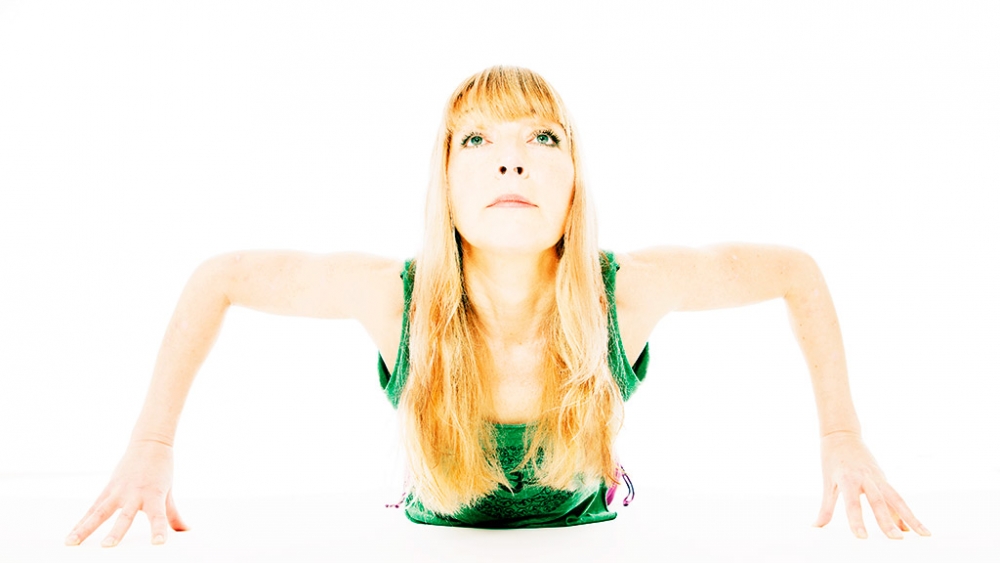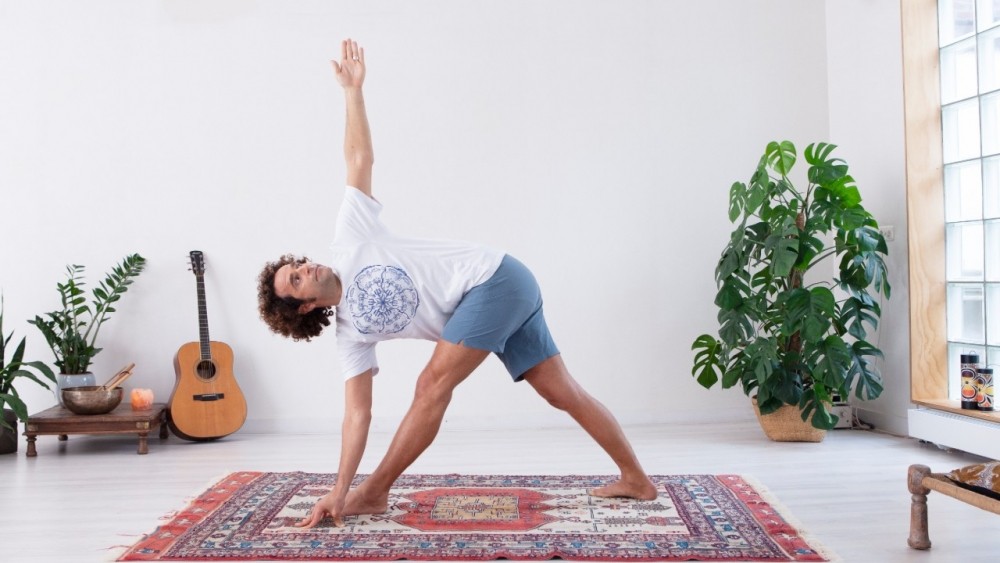I’ve been considering lately the fact that, more and more, my yoga teaching and practice is dominated by focusing on the breath. In fact, I don’t think I can do yoga without conscious breathing. For me the breath is yoga and I thought I’d write this article about why it is so important.
Yoga and the nervous system
Usually when we exercise we stimulate our Sympathetic Nervous System – SNS. This is the active, adrenalin-fuelled, Fight vs. Flight response. The SNS responds quickly to our environment and involves high levels of energy. It makes us stronger, more alert and less vulnerable to danger. It fills the body with high levels of the hormones cortisol and norepinephrine. In small amounts these hormones are ok, but long term they can affect our immune system, decrease bone density and sometimes lead to muscle atrophy, mood swings, symptoms of stress and anxiety and sleep deprivation.
In contrast, yoga works on triggering our Parasympathetic Nervous System or PNS. The PNS conserves energy, lowers stress, reduces blood pressure, strengthens the immune system and lifts your mood. The PNS is responsible for the ongoing, mellow, steady-state activity. The feeling of it is relaxation and contentment. Scientific research has shown that we could survive without our SNS but that we would soon die without our PNS.
The good news is that our PNS state is actually our fundamental homeostasis, our true state. However, we may rarely feel this way if we are constantly in our SNS, as many people are. Most of us exist in a chronic state of SNS – overactivation. We’re on high-alert in a fight or flight state. We believe that this is the norm and until we experience something different, or our health deteriorates, we may do little to change this. We are too busy, too active and rarely switch off. We work, play and exercise in this way. Even some yoga trends are feeding our SNS state. Intense Power Yoga or Hot Yoga classes can be SNS driven and leave little time for PNS return. For me, that really misses the whole point of yoga.
How does yoga trigger the PNS?
Through deep, regular breathing. Change your breath and you can instantly change how you feel both physically, mentally and emotionally.
Ideally, we want the breath and the PNS to be upmost in our yoga practice. Initially, there may be some SNS activation to get us going, to lift our energy but deep, regular breathing soon brings us to our relaxed state. And if the breath is allowed to lead the practice, then the overall experience of yoga is a nurturing and uplifting one.
Yoga strengthens the PNS and minimises the body’s tendency to activate the SNS. I’m certainly living proof of this. Most of the time I’m pretty mellow and relaxed on and off the yoga mat! In our yoga practice we remain calm because of the breath. A posture may stimulate a stress response but the breath helps us override it and stay calm.
Your Home Yoga Studio
Give your body an extra workout while at home. Our new program of studio-style yoga classes will help you tone up, improve your strength and stamina – but perhaps, most of all, develop a stronger connection and commitment to your yoga practice.
The breath increases sensitivity, attention and focus
Merging the pose with your breath will increase your sensitivity in the pose. You will feel what’s happening and be able to respond accordingly. Whereas when you hold the breath tension increases and your sensitivity lessens. Learning to feel deeply is one of the most important lessons in yoga. This learning comes from your connection to the breath.
Conscious breathing like Ujjayi breath is a very effective centring technique. You hold your attention on the sound so you are continually drawn back to it. In yoga, this attention and focus is called Dharana. With this focus emerges more presence and ultimately more energy. You can feel your body filling up with it. It stops your mind wandering. If your mind wanders the body soon becomes tired and your energy disperses.
Your breath is the real source of your energy and enthusiasm. If you find your mind and body beginning to tire when you practice yoga, deliberately try to bring more attention and energy to your breath. You will find your attention sharpens and your energy lifts. Strengthening your capacity for attention is the key to yoga, and your breath is the key to unlocking that strength.
Strengthening your capacity for attention is the key to yoga, and your breath is the key to unlocking that strength.
The breath brings the asana to life but also initiates the flow from one posture to another. It is dynamic stillness. We hold the posture but the breath creates movement and expansion from within. It is what moves the practice from the external physical structure to the internal more subtle body. If we move with the breath we support our body from the inside. We move within our own body’s abilities and are less likely to injure ourselves because we are moving from a place of consciousness.
It seems a lot to think about but really it’s as simple as breathing in and out. Always when you practice, ask yourself, “can I breathe fully and freely in this pose? Is my breath dominating?” If the answer is no then you are more than likely out of alignment, gone too far into the pose for your own capabilities or are thinking too much about it! Come out of the pose, back off, return to your breath…always.
The breath is more important than asana. Give yourself over to this and your whole experience of yoga will change. You will want to practice, you will want to get on your mat. You will feel more energised, more relaxed and more content. The breath is boss…let it rule!
Explore the connection between breath and asana in Nichi’s class Breathe and flow:
Related:
For more on the nervous system read Fight or Flight Versus Rest and Digest
This article first appeared on Nichi’s website on 4th April 2015


